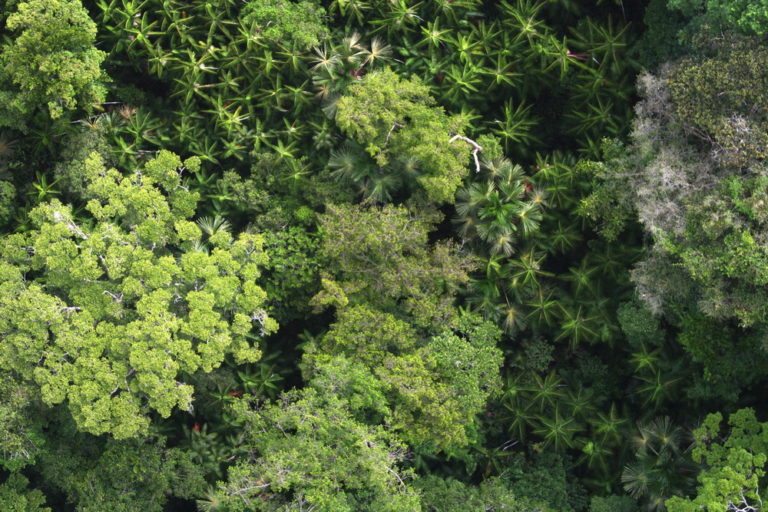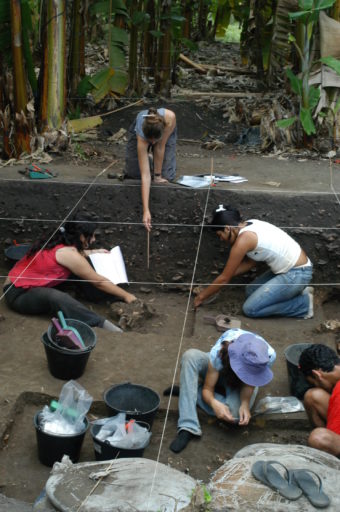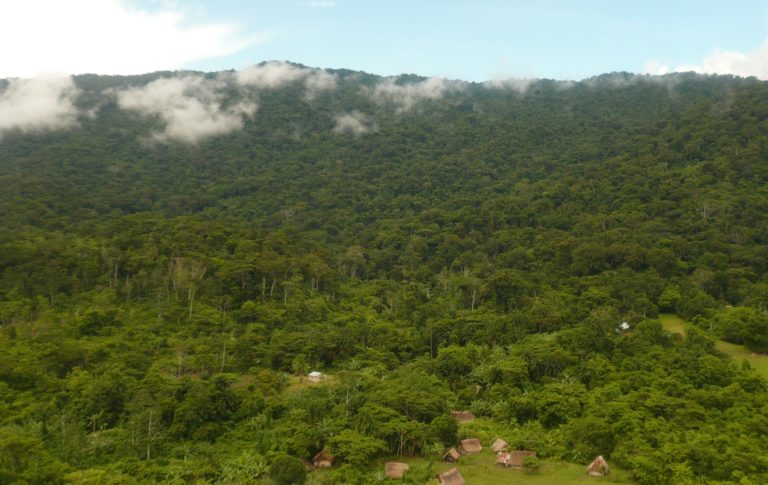- While the extent to which mankind has influenced the Amazon is a topic of much heated debate, a common assumption is that whether a species thrived in a particular area or not was determined mostly by the process of natural selection.
- But a research team that used data from more than 1,000 forest surveys to study forest composition at over 3,000 archaeological sites across the Amazon found that species domesticated by pre-Columbian peoples were five times as likely to be “hyperdominant” as non-domesticated species.
- “This lays to rest the long-standing myth of the ’empty Amazon’,” said Charles Clement, a senior researcher at Brazil’s National Institute for Amazonian Research (INPA) and a co-author of the study.
It’s common for conservationists to talk about preserving nature in a “pristine” or “unspoiled” state, but new research might complicate a simple definition of these terms, at least when it comes to the Amazon.
There are close to 12,000 known species of trees in the Amazon, and scientists estimate that there are probably 4,000 more that we haven’t yet discovered, meaning that the best guess is that the Amazon harbors a total of about 16,000 tree species.
While the extent to which mankind has influenced the Amazon is a topic of much heated debate, a common assumption is that whether a species thrived in a particular area or not was determined mostly by the process of natural selection. But according to a study published in the journal Science this month, the Amazon rainforests we seek to protect from the impacts of human activities today were shaped, at least in part, by indigenous peoples thousands of years ago.
“Some of the tree species that are abundant in Amazonian forests today, like cacao, açaí, and Brazil nut, are probably common because they were planted by people who lived there long before the arrival of European colonists,” Nigel Pitman, the Mellon Senior Conservation Ecologist at Chicago’s Field Museum and a co-author of the study, said in a statement.
Pitman was part of a research team that used data from more than 1,000 forest surveys to study forest composition at over 3,000 archaeological sites across the Amazon. By overlaying the data with a map of the sites, the team was able to look at how pre-Columbian peoples might have influenced the diversity and distribution of trees in the Amazon.

The team focused on 85 tree species cultivated by Amazonian peoples over the last several millennia for food, shelter, and other uses. They write in the study that “Domesticated species are five times more likely than nondomesticated species to be hyperdominant.” Throughout the Amazon Basin, the researchers found, “the relative abundance and richness of domesticated species increase in forests on and around archaeological sites… Our analyses indicate that modern tree communities in Amazonia are structured to an important extent by a long history of plant domestication by Amazonian peoples.”
Pitman added: “That’s even the case for some really remote, mature forests that we’d typically assumed to be pristine and undisturbed.”
“This lays to rest the long-standing myth of the ’empty Amazon’,” Charles Clement, a senior researcher at Brazil’s National Institute for Amazonian Research (INPA) and a co-author of the study, said in a statement. “Early European naturalists reported scattered indigenous populations living in huge and apparently virgin forests, and that idea has continued to fascinate the media, policy makers, development planners and even some scientists. This study confirms that even areas of the Amazon that look empty today are crowded with ancient footprints.”
Carolina Levis, a PhD student at Brazil’s National Institute for Amazonian Research and Wagenigen University and Research in the Netherlands, led the research team, which was comprised of hundreds of ecologists and social scientists from around the world.

Levis says that ecological studies have traditionally ignored the influence of pre-Columbian peoples on today’s forests, but that her team’s findings show why this is nonetheless an important line of inquiry.
“We found that a quarter of these domesticated tree species are widely distributed in the basin and dominate large expanses of forest,” she said. “These species are vital for the livelihood and economy of Amazonian peoples and indicate that the Amazonian flora is in part a surviving heritage of its former inhabitants.”
Levis and team caution that we still have a lot to learn about how mankind might have affected the species composition of the largest rainforest in the world, however. For one thing, it’s not clear what impacts more recent Amazonian settlements have had on the distribution and abundance of domesticated species that we can observe today. And while some regions, like Southwestern Amazonia, were found to have particularly high concentrations and diversities of these species (such as Brazil nut trees, which remain a staple of local residents’ livelihoods to this day), other regions, like the Guiana Shield, were found to harbor far fewer of the 85 species studied.
Compared to the 16,000 tree species believed to exist in the Amazon, studying just 85 species may appear to be a relatively small sample, but Levis and her co-authors say it is a sufficient number to demonstrate significant human influence. In fact, the researchers note that, because there are hundreds of other Amazonian tree species known to have been managed by pre-Colombian peoples, human impact on the Amazon might be even greater than their study has shown.
Flávia Costa, another researcher with INPA who was also a study co-author, said that these findings “have important implications for conservation,” especially given the fact that many of these domesticated tree species are still crucial to the livelihoods of Amazonian peoples, even while the Amazon continues to face severe threats from deforestation and degradation, road-building, mining, and other impacts of modern human industry.
“We have shown that the southwestern and eastern regions concentrate the most domesticated species, and these are the regions where most forest degradation and loss is occurring,” Costa said. “Southwestern and eastern Amazonia may not be considered classical biodiversity hotspots, but should be top conservation priorities as reservoirs of high value forests for human populations.”

CITATION
Levis, C., Costa, F. R., Bongers, F., Peña-Claros, M., Clement, C. R., Junqueira, A. B., … & Castilho, C. V. (2017). Persistent effects of pre-Columbian plant domestication on Amazonian forest composition. Science, 355(6328), 925-931. doi:10.1126/science.aal0157
Follow Mike Gaworecki on Twitter: @mikeg2001
FEEDBACK: Use this form to send a message to the author of this post. If you want to post a public comment, you can do that at the bottom of the page.